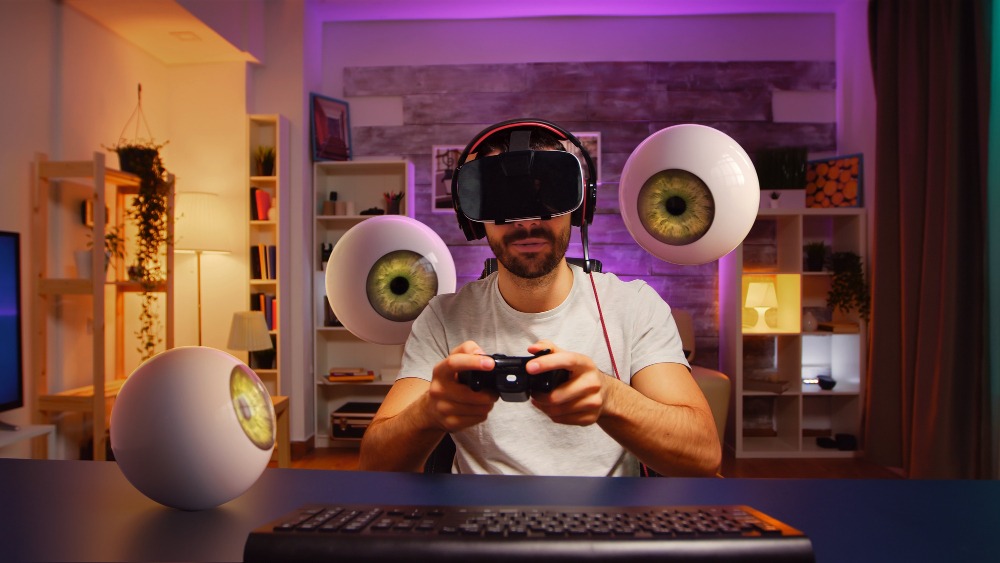The human brain, the most complex organ in our existence, has long captivated scientists and philosophers. Now, with the rise of neural interface technology, the prospect of a direct link between brain and machine is no longer science fiction. This comprehensive guide explores the exciting possibilities and ethical concerns surrounding this groundbreaking technology.
A Bridge Between Worlds: Understanding Neural Interfaces
Neural interfaces, also known as brain-computer interfaces (BCIs), are devices that establish a direct communication channel between the brain and a machine. Here’s a breakdown of how they work:
- Decoding Brain Signals: Neural interfaces use various technologies like electroencephalography (EEG) or implanted electrodes to capture electrical signals generated by brain activity.
- Interpreting the Code: These signals are then processed by sophisticated algorithms that translate them into commands the machine can understand.
- Sending Information Back: In some cases, neural interfaces can also send signals back to the brain, stimulating specific areas to create sensations or feedback.
A Glimpse into the Future: Potential Applications of Neural Interfaces
The potential applications of neural interfaces are vast and transformative:
- Medical Treatments: Neural interfaces hold immense promise for restoring lost motor functions in individuals with paralysis, controlling prosthetic limbs, or even treating neurological disorders like epilepsy or Parkinson’s disease.
- Enhanced Communication: Imagine bypassing speech and directly transmitting your thoughts to a communication device or translating thoughts into text messages for individuals with speech disabilities.
- Augmented Reality: Neural interfaces could revolutionize augmented reality experiences, allowing for seamless integration of digital information with the real world through direct brain control.
- Entertainment and Gaming: Direct brain control of video games or immersive entertainment experiences could push the boundaries of interactive entertainment.
A Crossroads of Ethics: Navigating the Challenges
Despite the exciting possibilities, neural interface technology raises significant ethical concerns:
- Privacy and Security: Direct access to brain activity raises serious concerns about data privacy and the potential for misuse by corporations or governments.
- Brain Hacking and Security Risks: The vulnerability of neural interfaces to hacking or manipulation could have devastating consequences.
- Augmenting the Human Mind: The potential for cognitive enhancement or altering human perception through neural interfaces raises philosophical questions about the definition of human identity.
- Unequal Access and Equity: Concerns exist regarding equitable access to this technology and the potential for exacerbating social inequalities.
The Race for Control: A Global Competition
The field of neural interface technology is witnessing a global race for dominance:
- Tech Giants: Tech giants like Facebook (Meta) and Neuralink are heavily invested in developing consumer-oriented neural interfaces.
- Medical Device Companies: Established medical device companies are focusing on neural interfaces for medical applications like restoring lost motor functions.
- Academic Research Institutions: Universities and research institutions play a vital role in fundamental research and development of new neural interface technologies.
Building a Responsible Future: The Need for Collaboration
- Robust Regulations:Clear regulations are needed to safeguard data privacy, ensure the safety and security of brain interfaces, and prevent misuse. These regulations should be developed with input from all stakeholders.
- Public Education: Raising public awareness about neural interfaces and fostering informed discussions will be crucial for building trust and ensuring responsible adoption.
Shaping the Future of Neural Interfaces
The development of neural interface technology presents a unique opportunity to improve human lives, redefine communication, and potentially enhance our understanding of the brain itself. Here’s how you can contribute to shaping the future of this technology:
- Stay Informed: Educate yourself about the potential benefits and ethical concerns surrounding neural interfaces. Read articles, watch documentaries, and engage in discussions to stay up-to-date.
- Engage in the Conversation: Share your thoughts and concerns with policymakers and technology developers. Let your voice be heard and advocate for responsible development.
- Demand Transparency and Ethics: Advocate for the responsible development and deployment of neural interfaces, prioritizing safety, privacy, and equitable access. Support initiatives that ensure everyone has a chance to benefit from this technology.
FAQs
- What is a neural interface?
A neural interface is a device that interacts with the nervous system. It can either record electrical signals from the brain (brain-computer interface, BCI) or stimulate specific neural pathways. These interfaces offer the potential to revolutionize fields like medicine, communication, and even entertainment.
- What are some current applications of neural interfaces?
- Medical Applications: BCIs are being used to help people with paralysis control prosthetic limbs or assistive devices. They also hold promise for treating neurological conditions like Parkinson’s disease and epilepsy.
- Sensory Restoration: Neural interfaces could potentially restore sight to blind individuals or hearing to those with deafness.
- Brain Monitoring: BCIs can be used to monitor brain activity for early detection of neurological disorders or for studying brain function during sleep or while performing tasks.
- What are the ethical concerns surrounding neural interfaces?
- Brain Privacy: Direct access to brain signals raises concerns about privacy and data security. Who owns your brain data, and how will it be used?
- Safety and Risks: The long-term effects of implanting devices in the brain are still unknown. Ethical considerations regarding potential risks and unintended consequences are crucial.
- Equity and Accessibility: Will NIT become too expensive, creating a divide between those who can afford it and those who cannot?
- Is there a race to control neural interface technology?
There is a growing interest in NIT from both tech companies and governments. Concerns exist regarding a potential race to control this technology, with ethical considerations potentially being sidelined in the pursuit of dominance.
- How can we ensure responsible development of neural interface technology?
- Open Dialogue and Transparency: Open discussions about the ethical implications of NIT are crucial, involving scientists, ethicists, policymakers, and the public.
- Robust Regulations: Clear regulations are needed to govern data privacy, safety standards, and potential misuse of this technology.
- International Collaboration: Ensuring responsible development requires international cooperation and shared ethical frameworks.
- What are the potential long-term implications of neural interfaces?
NIT could fundamentally change how we interact with technology and even redefine our understanding of human consciousness. Careful consideration of the ethical implications is vital to ensure this technology benefits humanity in the long run.
- Will neural interfaces allow us to directly control computers with our thoughts?
Brain-computer interfaces are already being used for basic control of computers. As the technology advances, more complex thought-based control might become possible in the future.
- Will neural interfaces enhance human capabilities?
NIT has the potential to enhance human capabilities in various ways, from restoring lost functions to potentially augmenting cognitive abilities. However, it’s crucial to consider the ethical implications of such enhancements and potential societal ramifications.
- What are the potential risks of brain hacking?
Neural interfaces raise the possibility of unauthorized access to brain data or even manipulation of neural activity. Robust cybersecurity measures are essential to mitigate these risks.
- Is the future of humanity intertwined with neural interfaces?
The impact of NIT on the future of humanity remains to be seen. This technology holds immense potential, but responsible development and addressing ethical concerns are paramount to ensure a future where humans and machines coexist in harmony.
Conclusion
Neural interface technology is still in its early stages, but its potential impact is undeniable. As we move forward, it is crucial to prioritize ethical considerations alongside technological advancements. Through open dialogue, collaboration, and a commitment to responsible development, we can ensure that neural interfaces usher in a future that benefits all of humanity.





















